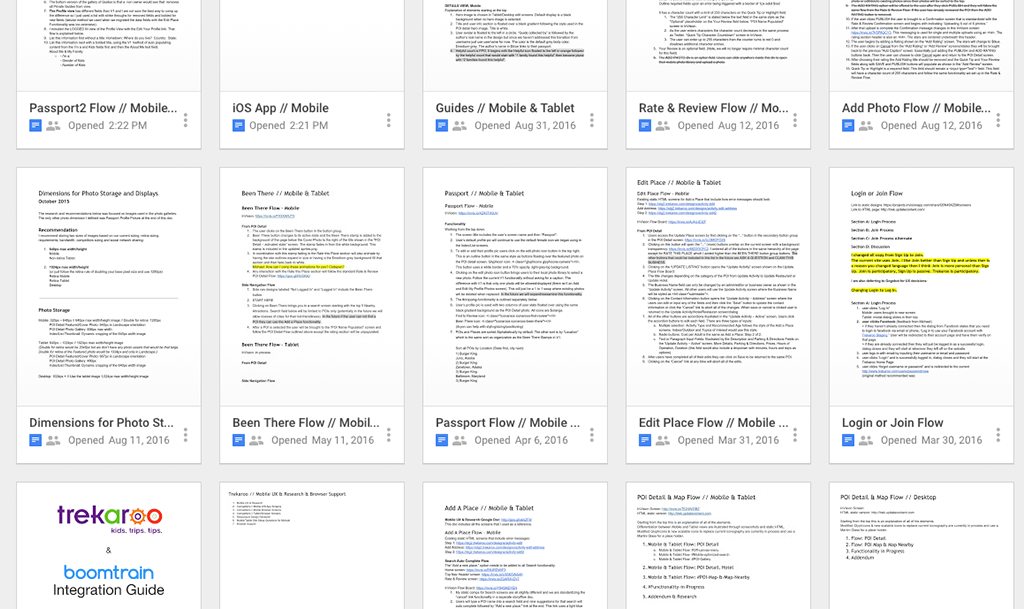Trekaroo
UX Designer and Front End DeveloperWorking in an iterative environment:
InVision to Foundation to Pivotal Tracker to Github to a Mobile First Single Page App

Trekaroo is the fun way to get the inside scoop on traveling with kids. They provide reviews of kid-friendly activities, hotels, and travel tips for family fun.
For over a year, I have worked remotely with a small family oriented team based in San Francisco and Albuquerque on a responsive update to their existing website. Using a mobile first process we decided on Ember.js as our application framework and Ruby on Rails as our backend framework to create a single page application that would serve content quicker in all environments. Foundation was used as our responsive front-end framework.
I served as the UX designer using InVision for design review. I also assisted in front end development creating scalable icons and assets in SVG and styling using SASS.
︎+︎=︎
User Experience Process
Focusing on UX for the past two years with the small team at Trekaroo has been a rewarding complement to my design and front end development skills.
I've refined my UX process to include research, iterative design & refinement using InVision followed by iterative development & testing using Pivotal Tracker.
Research
My research follows best practices from the design and development community and references from our competitors and industry leaders.
For Trekaroo this involved deciding on Ember.js as our backend framework to create a single page application and Foundation as our responsive front-end framework.

Iterative Design & Refinement
Extensive design iteration and prototyping for mobile, tablet and desktop screens was achieved through InVision. We comped specific screens as functional prototypes and full flows with multiple screens to expedite the design process.


Iterative Development & Testing
The development was handled primarily by our backend developer by creating the Handlebar templates and initial styles using Sass.
